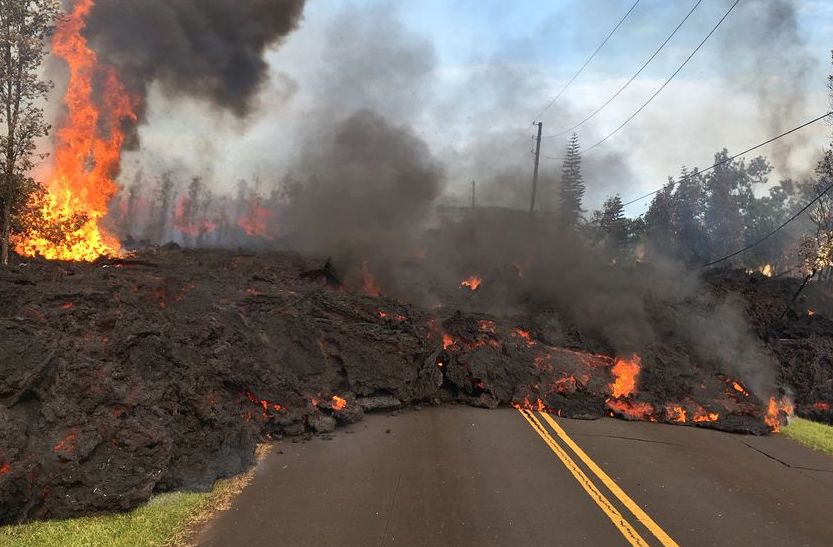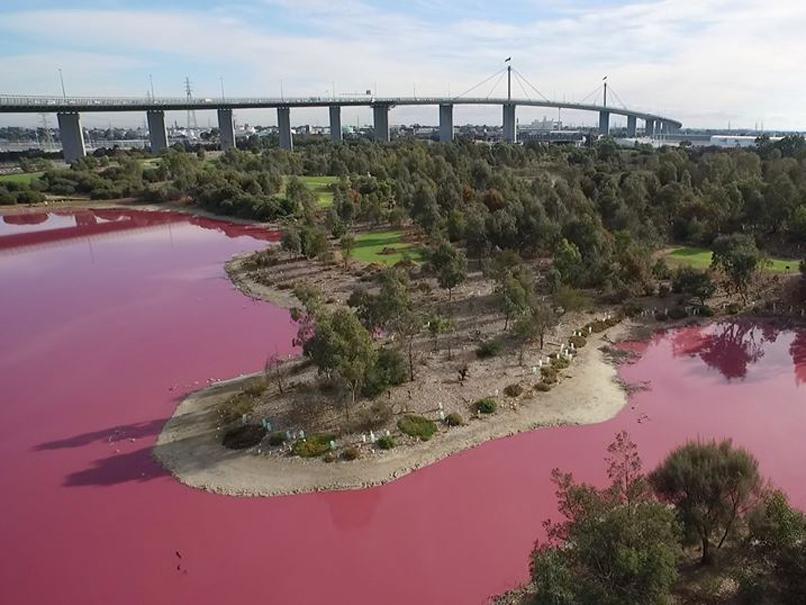
Hawaii’s Kilauea emits toxic gas from new cracks bubbling with lava.
Residents on the Big Island of Hawaii were alerted on Thursday to rising levels of toxic gas from lava-oozing fissures, and geologists warned that new areas east of the erupting Kilauea volcano may be at risk to molten rock bursting from the ground.
Hawaii County authorities sent a text message to residents of the southeast corner of the island notifying them that a wind change would bring rising levels of sulfur dioxide gas, which can be fatal if inhaled in large quantities.
“Due to decreasing trade winds, residents are advised to monitor their sensitivity to increased levels of SO2,” the text message sent at 9:22 a.m. said.
Hawaii’s governor has warned that mass evacuations may be required as more fissures open in the ground and spew lava and gas into semi-rural residential areas on the east flank of Kilauea, one of the world’s most active volcanoes.
Authorities on Thursday completed the removal of highly flammable chemicals from a nearby geothermal power plant that was in the path of creeping lava.
The latest upheaval at Kilauea began last week after the crater floor of a long-active side vent collapsed suddenly in a cloud of ash, triggering a similar plunge in the molten lake inside the larger crater at the volcano’s summit.
What followed was a flurry of earthquakes as huge volumes of magma — the term for lava beneath the surface — drained back through deep-underground passages that carried the molten rock far downslope. The lava then forced its way back to the surface through large cracks, or fissures, that opened at ground level in a residential area miles (km) away.
‘Ballistic blocks’
Geologists said Kilauea may be entering a new phase of explosive eruptions not seen in nearly a century that could hurl “ballistic blocks” weighing up to 12 tons for half a mile (800 meters), and rain pebble-sized fragments for another mile or two (1.8 to 3.2 km).
However, the immediate vicinity around the summit, an area controlled by the National Park Service, was to be closed to visitors indefinitely, starting on Thursday night.
Such blasts would likely also eject plumes of volcanic ash that could be carried farther downwind into neighboring communities, creating a nuisance and potential respiratory irritant, but not a life-threatening hazard, officials said.
The Leilani Estates community remains in greatest danger, with 15 volcanic fissures so far having destroyed 36 structures, most of them homes, and forcing the evacuation of about 2,000 residents.
But as the eruption progresses, “other areas of the lower East Rift Zone may also be at risk,” the Hawaiian Volcano Observatory said in its latest bulletin.
“There is the potential for additional outbreaks,” Christina Neal, the chief scientist at the U.S. Geological Survey’s Hawaiian Volcano Observatory at Kilauea told a news briefing. “There are other communities, other residential neighborhoods that could, depending on the evolution of activity, be in harm’s way.”
Hawaii Governor David Ige has requested federal disaster assistance as he said a mass evacuation of the lower Puna District, where Leilani Estates is located, would be beyond current county and state capabilities.













